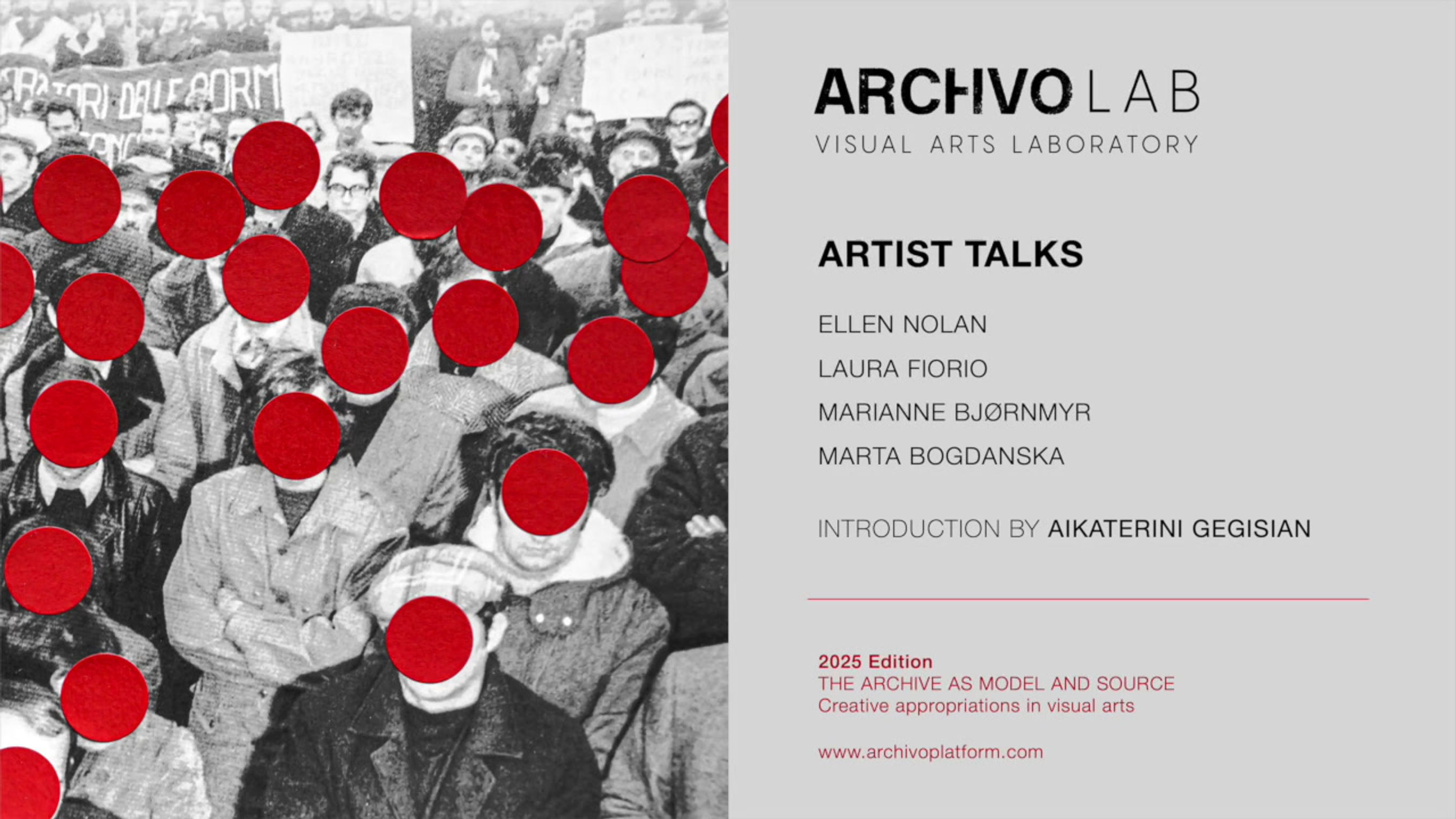
JANUARY-JULY 2026
PHOTOGRAPHY, ARCHIVE,
AND ENVIRONMENTAL IMAGINARIES
VISUAL PRACTICES AND ECOLOGICAL THINKING
Photoworks Director, UK
LOUISE FEDOTOV-CLEMENTS
GUEST MENTOR
Archivo LAB'26 supports artists whose practices engage with the unseen, the spectral, and the interconnected in times of ecological crisis. With a particular focus on photographic archives—understood both as material traces and speculative tools—the LAB'26 invites proposals that explore how photography and its archival infrastructures can shape ecological imaginaries and activate new relations of care. Emerging from the thematic framework of Haunted Archives of Livingness, the program invites visual artists, photographers, and practitioners to approach the archive not only as a repository but as a porous, living system: a site that preserves, decays, regenerates, and resists. Projects may explore the role of photography in embodying memory and omission, presence and erasure, the human and the more-than-human, engaging with issues such as environmental devastation, extractivism, climate grief, and digital materiality.
Through the lens of the politics of care, participants are encouraged to trace invisible histories, overlooked relationships, and affective resonances that emerge within ecological entanglements. Potential topics include, but are not limited to: found imagery, vernacular collections, speculative fictions, data imaginaries, as well as embodied practices of looking and remembering. The LAB'26 fosters experimental, interdisciplinary, and non-extractive methodologies, encouraging practices rooted in situated knowledge and ecological sensitivity. Emphasis will be placed on collaborative engagements and on reimagining the role of visual culture in articulating new forms of environmental awareness and responsibility.
ABOUT LOUISE FEDOTOV-CLEMENTS
—

Louise has been the Director of Photoworks since 2023, where she leads the strategic vision and artistic direction of the organisation. Established in 1995, Photoworks is an international platform focussed on the development of photography through a programme of exhibitions, residencies, publications, engagement, the biennale Photoworks Festival, the Ampersand Photography Fellowship and the Jerwood Photography Awards. She is the CoFounder/former Director FORMAT Festival. Previously she was Artistic Director QUAD, a centre for contemporary art and film; National Curator of Contemporary Art, Forestry England, and currently Jury Chair of Earth Photo with the Royal Geographical Society, Forestry England and Parker Harris. As a creative director since 1998 Louise has curated commissions, festivals, publications, mass participation, film/photography programmes/exhibitions, juried and mentored worldwide. www.photoworks.org.uk
ARCHIVO LAB is a mentored programme consisting of an experimental visual arts laboratory focused on practice-led research, at the intersection of photography and lens based media, articulating theory, criticism and creative practice. Within the programme, selected artists and practitioners are offered mentored sessions and engage in a series of webinars, reading groups, and other events. The purpose of the Archivo LAB is the experimentation, presentation, and mediation of technical images in contemporary art.
-
FORMAT AND DURATION
The Archivo LAB program runs from January to July 2026.
The programme is held remotely through ZOOM video conference. The public presentation of the LAB'26 artistic outcomes may include both virtual and in-person events.
-
ELIGIBILITY
The Archivo LAB welcomes applications from visual artists, photographers, and practitioners in the field of visual arts to reflect on photography, film, and other lens-based media. Applicants should be older than 18 years old, and there's no restriction to nationality or geographical location. Applicants must be proficient in spoken and written English.
-
LAB MENTORSHIP & ACTIVITIES
Throughout the Archivo LAB programme, candidates will participate in several activities, including: research webinars, reading groups, and mentorship sessions to present and discuss their visual research progress. As part of the LAB outcomes, candidates are expected to engage in public events organised by the Archivo Platform, in a format to be determined by the artists and the LAB coordinators as appropriate. The final works will be eligible for the Archivo Acquisition Prize, a recognition of the conceptual and artistic accomplishment developed throughout the LAB. The awarded work will be included in the Archivo Art Collection.
-
SELECTION PROCESS
A selection committee will evaluate the applications based on their quality, originality, and connection to the theme of the Archivo LAB 2026. The committee will be composed of the director of Archivo Platform and two invited jurors.
-
IMPORTANT INFORMATION
Applications must be submitted no later than September 30, 2025.
Please note that incomplete applications will not be considered.
Shortlisted candidates will be invited for interviews in the first half of October.
For further information, please contact: lab@archivoplatform.com


































































































































